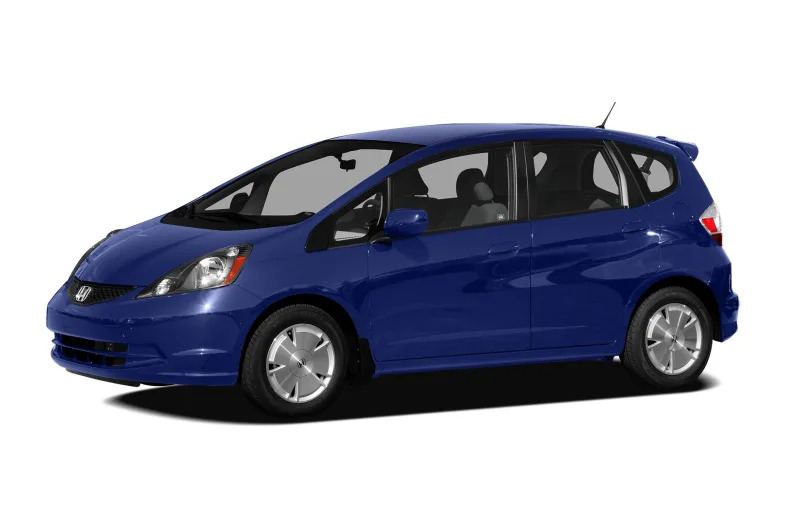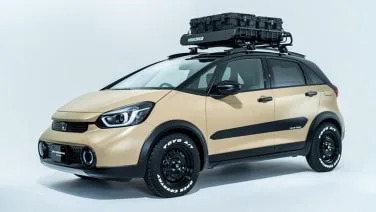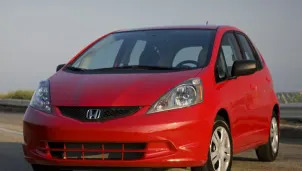Base 4dr Front-Wheel Drive Hatchback
2009 Honda Fit
2009 Honda Fit Sport – Click above for high-res image gallery When Honda introduced the first generation Fit to the North American market in mid-2006, its timing couldn't have been better. The entry level hatchback appeared just as fuel prices in the U.S. were heading skyward. Ever since then, the Fit has been selling as fast as Honda can bring them in from Japan. The Fit (or Jazz as its known in some markets) debuted in 2001 and the second-generation model went on sale in Japan last fall. Honda showed the new U.S.-spec Fit at the New York Auto Show last spring and we had our first opportunity to drive it on the roads north of Ann Arbor, MI last week. As is typically the case with new models, the updated Fit has grown a bit (about 4 inches in overall length), but it's only about 44 pounds heavier than the outgoing model. Also in the usual fashion, Honda strove to increase the refinement of the Fit while not losing any of the fun-loving qualities of the original. In the process, it has had to deal with rising raw material and shipping costs while keeping the price from getting out of hand. Read on to find out if the spiritual descendants of Soichiro Honda have succeeded. %Gallery-29718% Photos Copyright ©2008 Sam Abuelsamid / Weblogs, Inc. The debut of the modern MINI earlier this decade clearly demonstrated that a small, fuel efficient car didn't have to be a cheap, plasticy, under-performing penalty box in which to suffer your commuting activities. The MINI's BMW origins, however, meant that it was a bit on the pricey side as well as having a minuscule back seat. The arrival of the Fit on our shores took those same driving qualities and added a more reasonable price and vastly more space for occupants. The Fit is taller and longer than the MINI, but smaller than cars like the Nissan Versa and Ford Focus. The original Fit was designed well before Honda decided to bring the car to North America, so it didn't incorporate much in way of U.S. demands. Nonetheless, in its first two years on the market, American drivers took to the Fit and Honda sold as many as they could stuff on cargo ships from Japan. Besides its handling and fuel efficiency, features like the rear Magic Seats and ample cargo space also contributed to its popularity. For the second generation Fit, Honda wanted to build on what made the original a hot seller without diluting any of those properties. The design philosophy behind the Fit is described as "Man-Maximum, Machine-Minimum," shrinking the car around the biggest possible user space. As we said, the new Fit has grown a bit, but not by much. Its limbo capabilities are unchanged at 60 inches, but it's about 0.6 inches wider and 4.3 inches longer. Following its New York Auto Show debut last spring, some observers complained about the longer nose compared to the JDM (Japanese …
Full Review
2009 Honda Fit Sport – Click above for high-res image gallery When Honda introduced the first generation Fit to the North American market in mid-2006, its timing couldn't have been better. The entry level hatchback appeared just as fuel prices in the U.S. were heading skyward. Ever since then, the Fit has been selling as fast as Honda can bring them in from Japan. The Fit (or Jazz as its known in some markets) debuted in 2001 and the second-generation model went on sale in Japan last fall. Honda showed the new U.S.-spec Fit at the New York Auto Show last spring and we had our first opportunity to drive it on the roads north of Ann Arbor, MI last week. As is typically the case with new models, the updated Fit has grown a bit (about 4 inches in overall length), but it's only about 44 pounds heavier than the outgoing model. Also in the usual fashion, Honda strove to increase the refinement of the Fit while not losing any of the fun-loving qualities of the original. In the process, it has had to deal with rising raw material and shipping costs while keeping the price from getting out of hand. Read on to find out if the spiritual descendants of Soichiro Honda have succeeded. %Gallery-29718% Photos Copyright ©2008 Sam Abuelsamid / Weblogs, Inc. The debut of the modern MINI earlier this decade clearly demonstrated that a small, fuel efficient car didn't have to be a cheap, plasticy, under-performing penalty box in which to suffer your commuting activities. The MINI's BMW origins, however, meant that it was a bit on the pricey side as well as having a minuscule back seat. The arrival of the Fit on our shores took those same driving qualities and added a more reasonable price and vastly more space for occupants. The Fit is taller and longer than the MINI, but smaller than cars like the Nissan Versa and Ford Focus. The original Fit was designed well before Honda decided to bring the car to North America, so it didn't incorporate much in way of U.S. demands. Nonetheless, in its first two years on the market, American drivers took to the Fit and Honda sold as many as they could stuff on cargo ships from Japan. Besides its handling and fuel efficiency, features like the rear Magic Seats and ample cargo space also contributed to its popularity. For the second generation Fit, Honda wanted to build on what made the original a hot seller without diluting any of those properties. The design philosophy behind the Fit is described as "Man-Maximum, Machine-Minimum," shrinking the car around the biggest possible user space. As we said, the new Fit has grown a bit, but not by much. Its limbo capabilities are unchanged at 60 inches, but it's about 0.6 inches wider and 4.3 inches longer. Following its New York Auto Show debut last spring, some observers complained about the longer nose compared to the JDM (Japanese …
Hide Full Review
Hide Full Review
Retail Price
$14,750
MSRP / Window Sticker Price
| Engine | 1.5L I-4 |
| MPG | 27 City / 33 Hwy |
| Seating | 5 Passengers |
| Transmission | 5-spd man w/OD |
| Power | 117 @ 6600 rpm |
| Drivetrain | front-wheel |
Smart Buy Program is powered by 






